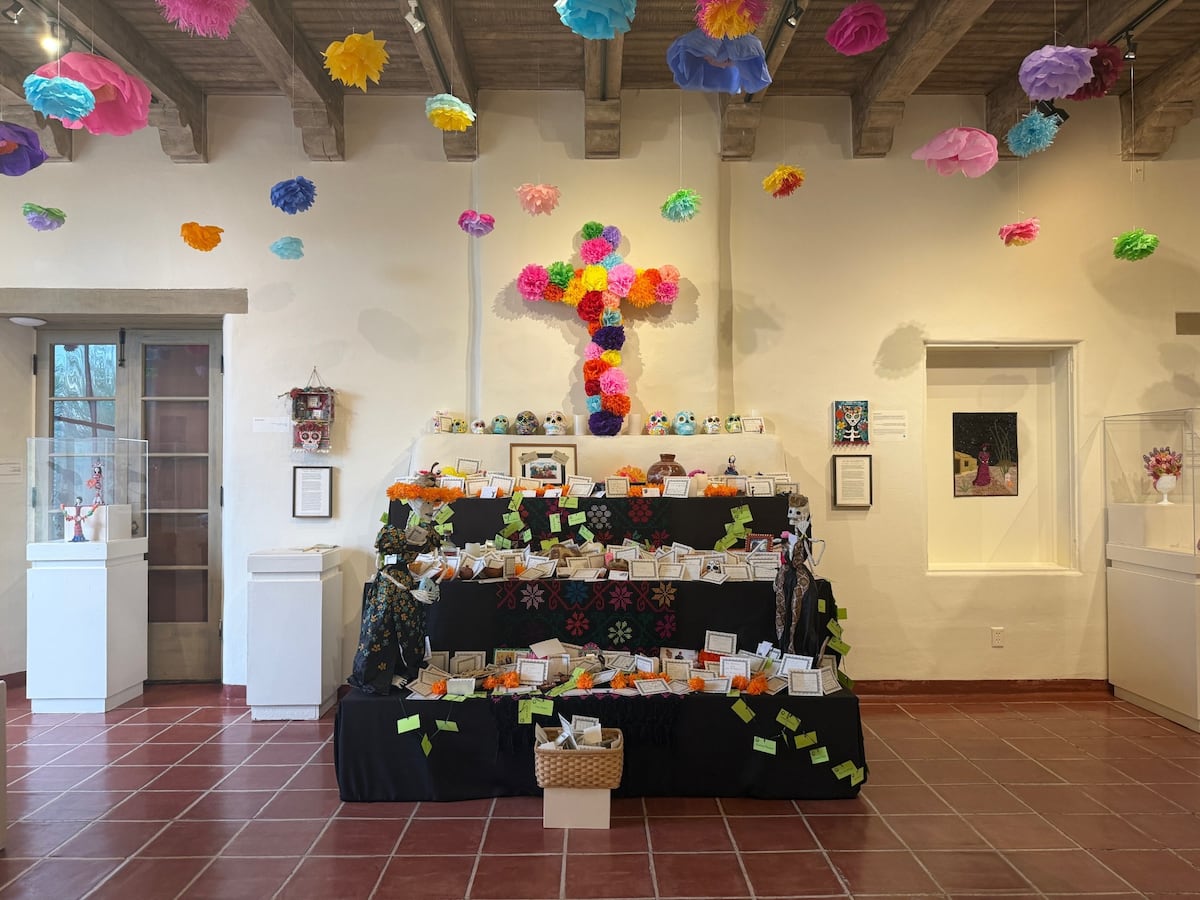
"Antonio Estrada and Gloria Valenzuela's remembrances of growing up in the borderlands are woven into every altar for Dia de los Muertos, or Day of the Dead, they have constructed over more than three decades. A bottle of Seagram's 7 always stands on the altar alongside the photo of Estrada's father because he loved his whiskey. His mother's favorite color was pink, so the framed image of the seamstress and mother of six from South Tucson is always flanked by pink blossoms."
"Valenzuela's memories of her hometown of Guadalupe, Arizona, just outside Phoenix, shape homages to her family. It's a way to communicate with our loved ones in a very personal way, and to respect their memory, said Valenzuela, who learned altar-making from her late mother, a Mexican-American with roots in the Mexican state of Jalisco. Estrada, who, like many Mexican Americans, grew up without the tradition, learned from Valenzuela, his wife."
Antonio Estrada and Gloria Valenzuela construct Día de los Muertos altars that incorporate personal memories and symbolic items, such as Seagram's 7 and pink blossoms, to honor family members. Valenzuela learned altar-making from her mother and draws on her Guadalupe, Arizona roots to shape homages. Estrada learned the tradition from Valenzuela and the couple teaches altar-making to newcomers amid a growing surge of celebrations across the Southwest and U.S. cities. The 2017 film Coco helped accelerate public interest. Día de los Muertos has Indigenous roots predating the Spanish Conquest and overlaps but remains distinct from All Saints and All Souls observances.
Read at english.elpais.com
Unable to calculate read time
Collection
[
|
...
]